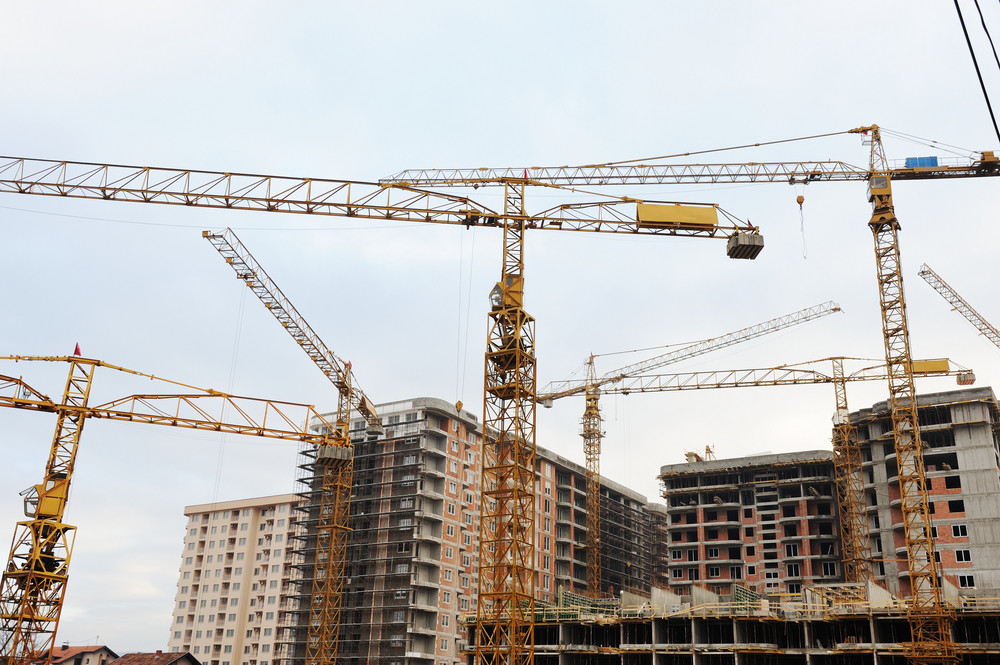
What Are the Different Types of Cranes and What Are They Used For?
Highlights:
- Cranes vary by mobility, load capacity, and job site needs.
- Mobile cranes are flexible and ideal for short-term or small-space projects.
- Tower cranes are essential for tall structures and urban high-rises.
- Crawler cranes offer high lifting power and stability on uneven terrain.
- Overhead cranes are used in factories and warehouses for indoor lifting.
- Certified crane companies ensure safety, compliance, and skilled operation.
- Springfield, IL, has reliable, OSHA-compliant crane providers for local projects.

1. Why Are There So Many Different Types of Cranes?
A common question construction managers and contractors ask is: Why can’t one crane do it all? The answer lies in site conditions, load requirements, space constraints, and project timelines. Cranes are engineered to perform specific lifting tasks—whether it’s maneuvering steel beams on a high-rise or installing HVAC units on a school roof. The right crane ensures safety, efficiency, and cost-effectiveness. Using the wrong one can lead to delays, accidents, or equipment damage. That’s why it’s important to work with a certified crane company in Springfield, IL, that can match your project with the ideal equipment and trained operator.
2. What Is a Mobile Crane and When Should I Use One?
Mobile cranes are among the most versatile types in the industry. They consist of a telescopic boom mounted on a truck or wheeled chassis, allowing for quick transport to various job sites. Their compact footprint and setup speed make them ideal for urban construction, utility work, HVAC placement, and general lifting. If you’re asking, “Can I rent a crane for a one-day job in a tight space?” a mobile crane is probably the answer. It’s especially useful for lifting loads under 50 tons without the need for a lengthy setup process. Local Springfield-area contractors often use mobile cranes for maintenance work, rooftop installations, and light construction.
3. What Are Tower Cranes and Why Are They So Tall?
Tower cranes are the massive vertical structures you often see dotting the skyline during large-scale urban construction. Designed for extreme height and heavy lifting, tower cranes are fixed to the ground or attached to the building structure itself. Their reach, height, and stability make them essential for constructing skyscrapers, stadiums, and bridges. Clients often ask: “Why can’t I just use a mobile crane for everything?” The answer lies in physics and engineering—mobile cranes can’t reach the same vertical heights or lift as much weight at extreme outreach. If your project in downtown Springfield involves multi-story buildings or structural steel assembly, a tower crane may be your best option.
4. When Should I Choose a Crawler Crane?
If your construction site features rough or uneven ground, a crawler crane might be the best solution. These cranes move on tracks (not wheels), giving them excellent stability and load capacity on difficult terrain. They also have greater lifting power than standard mobile cranes and can be fitted with various boom types for customized reach. A frequent question from site managers is: “Can a crane handle heavy loads on soft ground?”—and a crawler crane often fits the bill. In central Illinois, crawler cranes are used in infrastructure projects, road building, and wind farm installation—anywhere terrain is a challenge and lifting requirements are significant.
5. What Are Rough Terrain and All-Terrain Cranes?
Both rough terrain and all-terrain cranes are mobile cranes built for off-road conditions. Rough terrain cranes operate on four large rubber tires and are built for job sites with limited access or unpaved surfaces. All-terrain cranes combine on-road and off-road capabilities, making them ideal for long-distance travel followed by difficult job site navigation. If you’re wondering, “Can I get a crane that works on both highways and mud?”—an all-terrain crane is your answer. These are frequently used in rural areas around Springfield, IL, where crews may travel long distances between job sites and work on non-paved construction zones.
6. What Are Overhead Cranes and Who Uses Them?
Not all crane work happens outdoors. Overhead cranes, also called bridge cranes, are installed inside factories, warehouses, and production facilities. These cranes consist of a beam system mounted to the ceiling structure and are used to move loads horizontally across large indoor spaces. People often ask: “Do I need a crane even if I’m not on a construction site?”—and the answer is yes, especially in manufacturing, logistics, or heavy industrial operations. Springfield-area businesses rely on overhead cranes for assembly lines, machinery relocation, and moving inventory in heavy-duty storage facilities.

7. What Questions Should I Ask a Crane Rental Company?
Choosing the right crane is only part of the equation—you also need the right company. Clients commonly ask, “How do I know the crane operator is qualified?” or “What insurance do I need?” A reputable crane rental provider should be certified, insured, and compliant with OSHA standards.
Ask these key questions:
- Are your crane operators NCCCO certified?
- Do you provide site-specific lift planning?
- Are your cranes inspected and maintained regularly?
- Do you carry liability and equipment insurance?
- Do you provide signalers or riggers?
In Springfield, IL, several local crane service providers meet these standards and offer flexible, competitively priced packages for both short- and long-term projects.
Source: NCCCO – CCO Mobile Crane Operator Certification Overview
8. Why Certification and Safety Standards Matter
Safety is a top concern in any crane operation. Cranes are powerful machines, and mishandling them can lead to severe injury, project delays, or structural damage. That’s why working with a certified company ensures all personnel—from crane operators to riggers—have undergone rigorous training and testing. OSHA and the NCCCO (National Commission for the Certification of Crane Operators) require specific certifications for operators handling equipment over certain weight limits. A company that follows these standards not only protects its crew, but also your job site and liability exposure. For Springfield projects, working with a certified crane rental company helps you stay compliant, insured, and on schedule.
Source: Crane, Derrick and Hoist Safety – Overview | Occupational Safety and Health Administration
9. How Do I Choose the Right Crane for My Job?
This is perhaps the most common and important question: “How do I know which crane is right for my project?” The answer depends on several variables:
- Weight and size of the load
- Site access and terrain conditions
- Lift height and reach
- Job duration
- Permitting and road access
Certified crane companies in Springfield will typically conduct a site walk-through and lift plan consultation before recommending equipment. Their goal is to select the safest and most efficient crane for your unique project. This personalized approach ensures your lift is not only compliant but also optimized for time and cost.
Conclusion: Choose a Certified Crane Partner in Springfield, IL
When it comes to crane services, one size does not fit all. Each crane type—whether it’s a mobile crane for rooftop HVAC lifts, a tower crane for steel beam placement, or a crawler crane for roadwork—plays a specific role in the construction and logistics ecosystem. The key is understanding your project’s needs and working with a certified provider who can guide you through the selection process. Springfield, IL, is home to trusted, local crane companies that offer certified operators, well-maintained equipment, full lift planning, and unmatched safety compliance. Whether your job site is in the city center, a remote highway, or an industrial warehouse, these professionals help you complete your lifts efficiently and safely.



